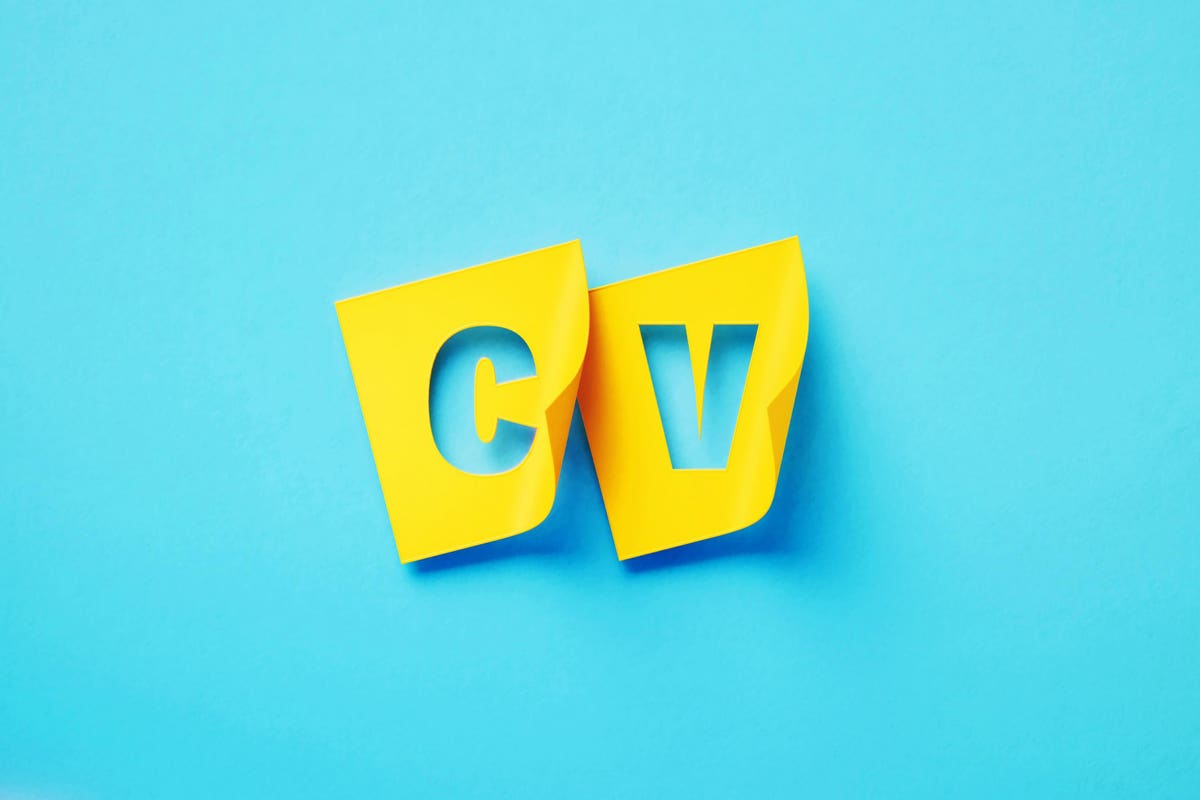ChatGPT is now firmly established as an aid in writing application essays for college, business school and jobs. AI can also help write a CV whose main advantage is that it can be read by another AI.
Form vs. Content
Creating a CV is a tedious, time-consuming task. It’s easy to understand why some people put it off, telling themselves that it could be done in an afternoon—just not this afternoon. Other people may think they have a CV ready to go, because they have pasted minimal data into one of the busy, colorful templates available on the internet.
However, for professional purposes, you would be well advised to create a CV in a classic format: black text on a white background, contact data at the top, bulleted education and experience sections and a final section that’s a bit of fun.
Several companies now offer free and paid versions of AI-powered online templates with fill-in masks that insure that your CV is properly formatted. Once you choose a template, boxes will pop up, inviting you to type in the necessary content: name, address, and so on.
The First Challenge Is Content
Things get more challenging when you get to the section on experience. Again, boxes will guise you through the process, but—and this is a big “but”—you will need to come up with the content.
In other words, the AI will format your CV, but not write it for you. You will need to gather the information on each step of your education or work experience, come up with succinct statements of your accomplishments, choose active verbs and quantify results.
In other words, you will need to put the same amount of work into writing individual entries that you would have had to do if you were not using AI.
When you’re done entering the information, you can export the file as a Microsoft Word or PDF file. If you are using the free version of the AI software, the company keeps your data for only a limited time.
The Second Challenge Is Form
It may seem magical to see an AI instantly format your material into the precise format required for applications to college, business school or jobs. But once you look more closely, you are almost sure to see room for improvement.
You may be frustrated by the ample white space that makes it easy to scan the individual entries, but causes your CV to run over the desired one-page limit. You may wish you could decrease the space between lines or adjust the indentation to squeeze in just one more word, but you can’t change the presets.
And in the long run, you will want to update your CV periodically or adjust it for different purposes. These adaptations are easier to make when the document is completely under your control in Microsoft Word or Pages.
Make Sure Your CV is Machine-Readable
The more important question is not, “Can AI write my CV?” but “Can AI read it?”
Business school admissions committees frequently assure candidates that they use holistic criteria to evaluate applications. Employers, on the other hand, need a fast way to evaluate thousands of applications, so they may use an applicant tracking system.
An applicant tracking system is programmed to read a list of accomplishments in reverse chronological order, looking for specific key words. It cannot read any other format.
In particular, it cannot read images, or the columns or tables you may be tempted to use to keep your data in order.
Lisa Rangel, CEO of Chameleon Resumes and Top Voice for Resume Writing on LinkedIn, offered these technical tips in a conversation on LinkedIn: “To optimize your resume for AI scanning, use standard fonts and formats, and incorporate relevant keywords naturally throughout your content. Avoid complex, two column layouts or ornate graphics that might confuse AI parsers and ensure your document is saved in a compatible file format like PDF or Word.”
Rangel pointed out a tricky detail. When creating a CV in Microsoft Word, Pages or another text-processor, applicants may be tempted to use a header to insert their contact information, in order to make use of the top margin. Rangel warns against this, because it will cause problems in virtually all applicant tracking systems and some email previewers. If a recruiter clicks on an email attachment using an email previewer without actually opening the document, they may see only the body text and miss that all-important information, your contact data.
So whether your first reader is a human being or an AI, the most important thing to remember is: Formatting is critical.
Pros and Cons
ChatGPT has raised expectations of what AI can do for writers. However, current versions of CV-writing programs are more accurately described as formatting programs. That’s benefit is not negligible, but it is not as impressive as ChatGPT’s seemingly effortless generation of perfectly-written, if inane, text.
Furthermore, you will almost certainly need to adjust the document to maximize space for content, or to update your CV as time goes by.
But even if CV-producing AI is low on creativity, it has the considerable advantage that any document produced by an AI can be read by an AI.
Read the full article here





